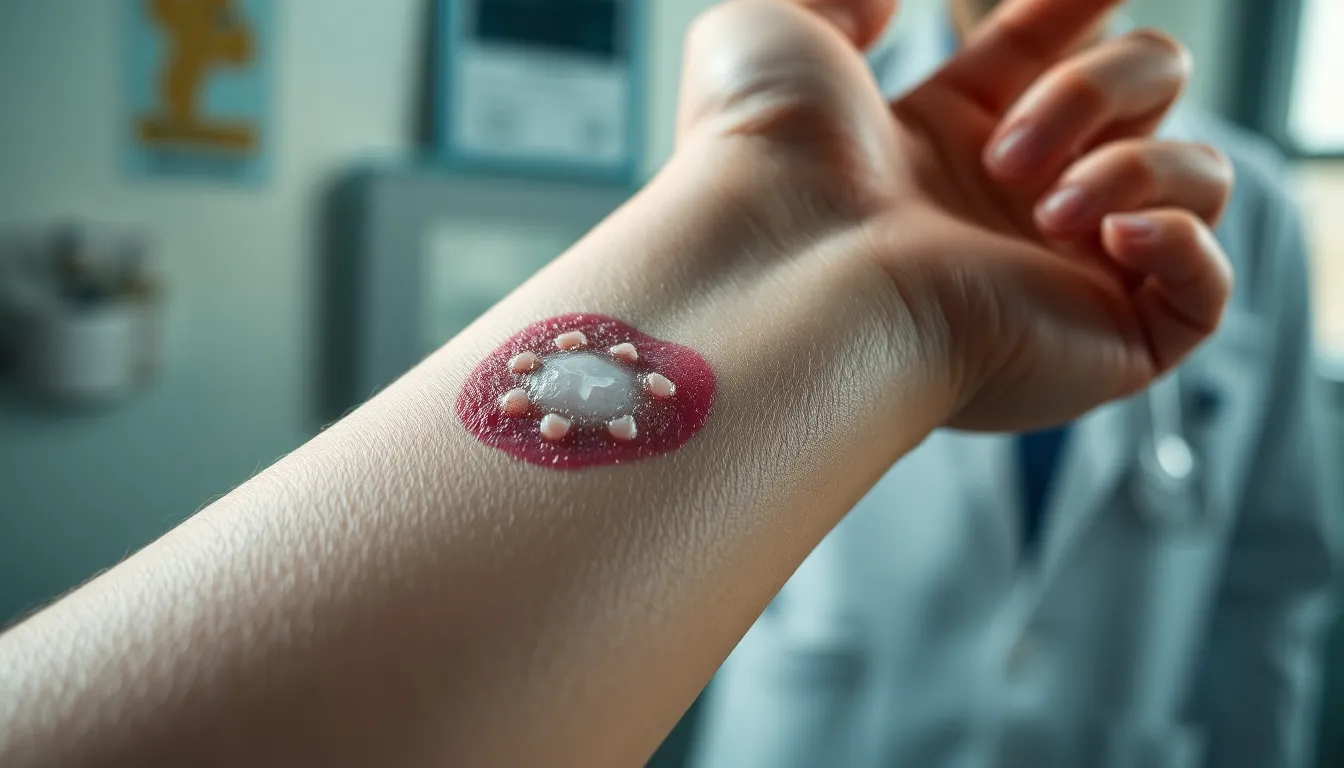When it comes to healing wounds, everyone’s looking for the magic potion that’ll turn them from a scraped knee to a superhero in no time. Enter iodine, the age-old remedy that’s been making waves in first aid kits since before selfies were a thing. But does this brown liquid really speed up the healing process, or is it just a colorful way to make injuries look more dramatic?
Table of Contents
ToggleUnderstanding Iodine’s Role in Wound Healing
Iodine serves as a common antiseptic in wound care, typically used to prevent infection. Examining its properties clarifies its role in healing.
What Is Iodine?
Iodine is a chemical element essential for thyroid function and overall health. It often appears in topical antiseptics, such as tinctures or solutions. These formulations help cleanse wounds by eliminating bacteria. Medical professionals value iodine for its broad-spectrum antimicrobial activity. Various iodine compounds exist, including povidone-iodine and sodium iodide, each with distinct applications in wound management.
How Does Iodine Work in the Body?
Iodine promotes wound healing through its antimicrobial properties. It destroys pathogens by disrupting cell membranes and affecting essential metabolic processes. When applied, iodine releases iodine molecules, which infiltrate bacterial cells, leading to cell death. Healing often improves due to reduced infection risk. Additionally, iodine supports tissue regeneration, aiding in the repair process. By encouraging the growth of new cells, it optimizes recovery times significantly.
The Science Behind Wound Healing

Wound healing involves a complex biological process with distinct stages. Each stage plays a critical role in repairing tissue damage caused by injuries.
Stages of Wound Healing
Inflammation kicks off the process, where the body responds to injury. Increased blood flow brings white blood cells to the site, fighting infection. Next comes the proliferative phase, where new tissue forms, facilitated by fibroblasts generating collagen. Granulation tissue develops, filling the wound space. Lastly, maturation occurs, where collagen is remodeled, strengthening the skin. These stages typically unfold within a 4 to 6-week timeframe, depending on the wound’s severity and the individual’s health.
Factors Influencing Wound Healing
Multiple factors impact how quickly wounds heal. Age often plays a role; older individuals typically experience slower healing. Nutrition also matters; sufficient protein, vitamins, and minerals support the body’s repair processes. Chronic illnesses such as diabetes can hinder healing due to impaired blood circulation. Medications like corticosteroids might suppress the inflammatory response, prolonging recovery. Psychological state cannot be overlooked; stress affects immune responses, complicating the healing process.
Research on Iodine and Wound Healing
Iodine’s role in wound healing has attracted significant attention, with multiple studies exploring its effectiveness. Some researchers demonstrate that iodine’s antiseptic properties effectively inhibit bacterial growth, reducing infection rates in wounds.
Studies Supporting Iodine Use
Several studies support iodine’s role in enhancing wound healing. In a controlled trial, patients treated with iodine-infused dressings showed faster healing times compared to those using standard treatments. Another investigation found that iodine reduced the time to achieve complete wound closure by 30% in diabetic patients. This evidence highlights iodine’s potential benefits in facilitating quicker recovery while minimizing complications.
Critiques and Limitations of Existing Research
Despite promising findings, critiques exist regarding the current research on iodine. Some studies provide limited sample sizes that may not represent broader populations. A lack of standardized protocols across various trials also complicates comparisons and conclusions. Furthermore, the potential for skin irritation from iodine use raises concerns about its suitability for all patients. Thus, caution remains essential until more comprehensive studies are available.
Practical Applications of Iodine in Wound Care
Iodine offers versatile applications in wound care, particularly as an effective antiseptic. Its use varies depending on the form applied to the injury.
Forms of Iodine for Wound Treatment
Topical iodine comes in several forms, including tinctures, solutions, and ointments. Tincture of iodine contains a higher concentration, often used for disinfection before surgery. Iodine solution, such as povidone-iodine, is widely applied due to its gentle properties and sustained antimicrobial effectiveness. Creams or ointments containing iodine provide a protective barrier while promoting healing. These forms ensure both infection prevention and optimal moisture retention.
Guidelines for Use
Proper application of iodine in wound care is crucial to maximize its benefits. Clean the wound thoroughly before applying iodine to remove impurities. Apply a thin layer of iodine, ensuring coverage without excess pooling. Cover the area with a sterile dressing to prevent contamination. Change the dressing daily, or more frequently if it becomes wet or soiled. Monitor for signs of irritation or allergic reaction, and discontinue use if adverse effects arise.
Iodine’s role in wound healing is multifaceted and backed by emerging research. Its powerful antiseptic properties help prevent infections which can significantly speed up the healing process. While studies suggest that iodine-infused dressings may lead to faster recovery times particularly in patients with chronic wounds it’s essential to approach its use with caution.
The potential for skin irritation and the need for more comprehensive studies indicate that further exploration is necessary. By understanding how iodine works and applying it correctly, individuals can harness its benefits while remaining mindful of its limitations. Ultimately, iodine remains a valuable tool in wound care, contributing to improved healing outcomes when used appropriately.





